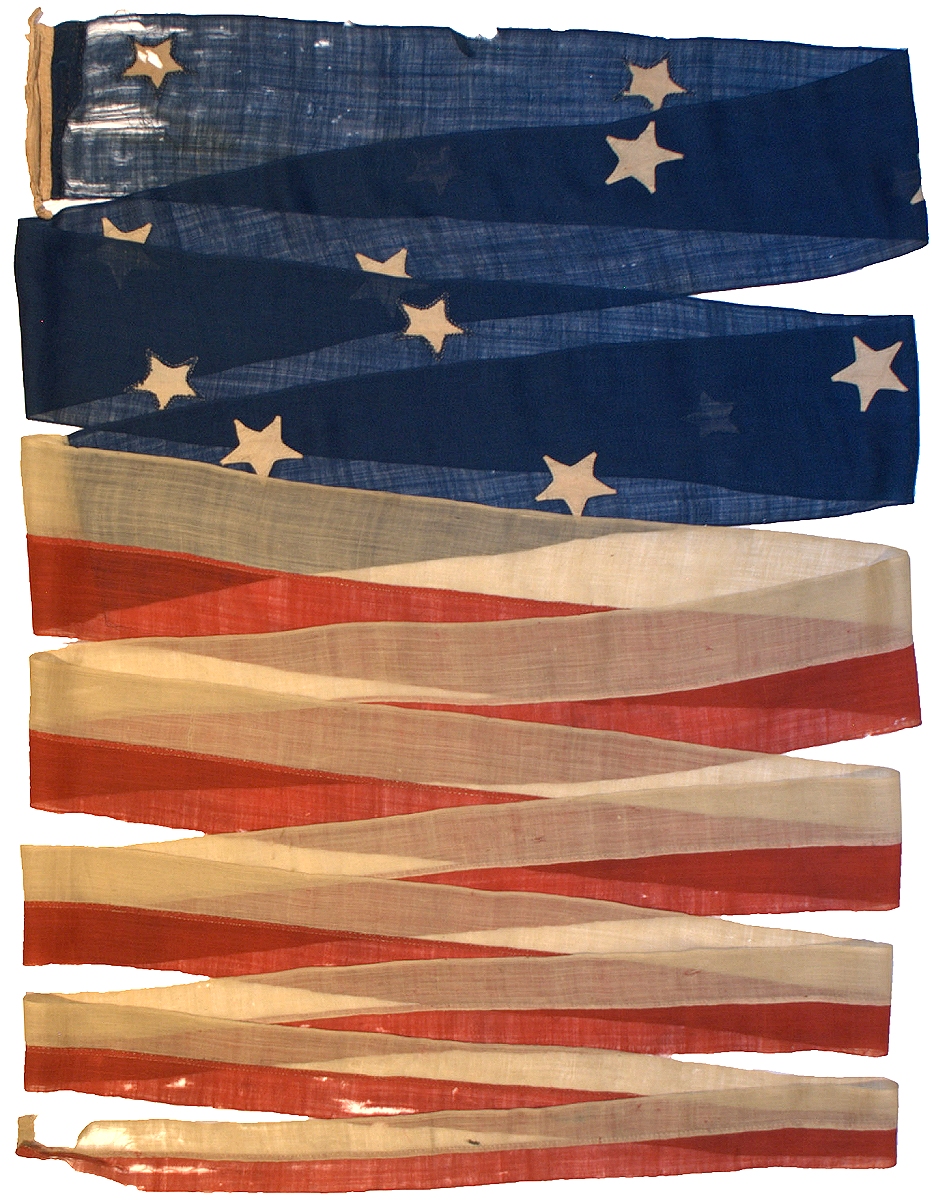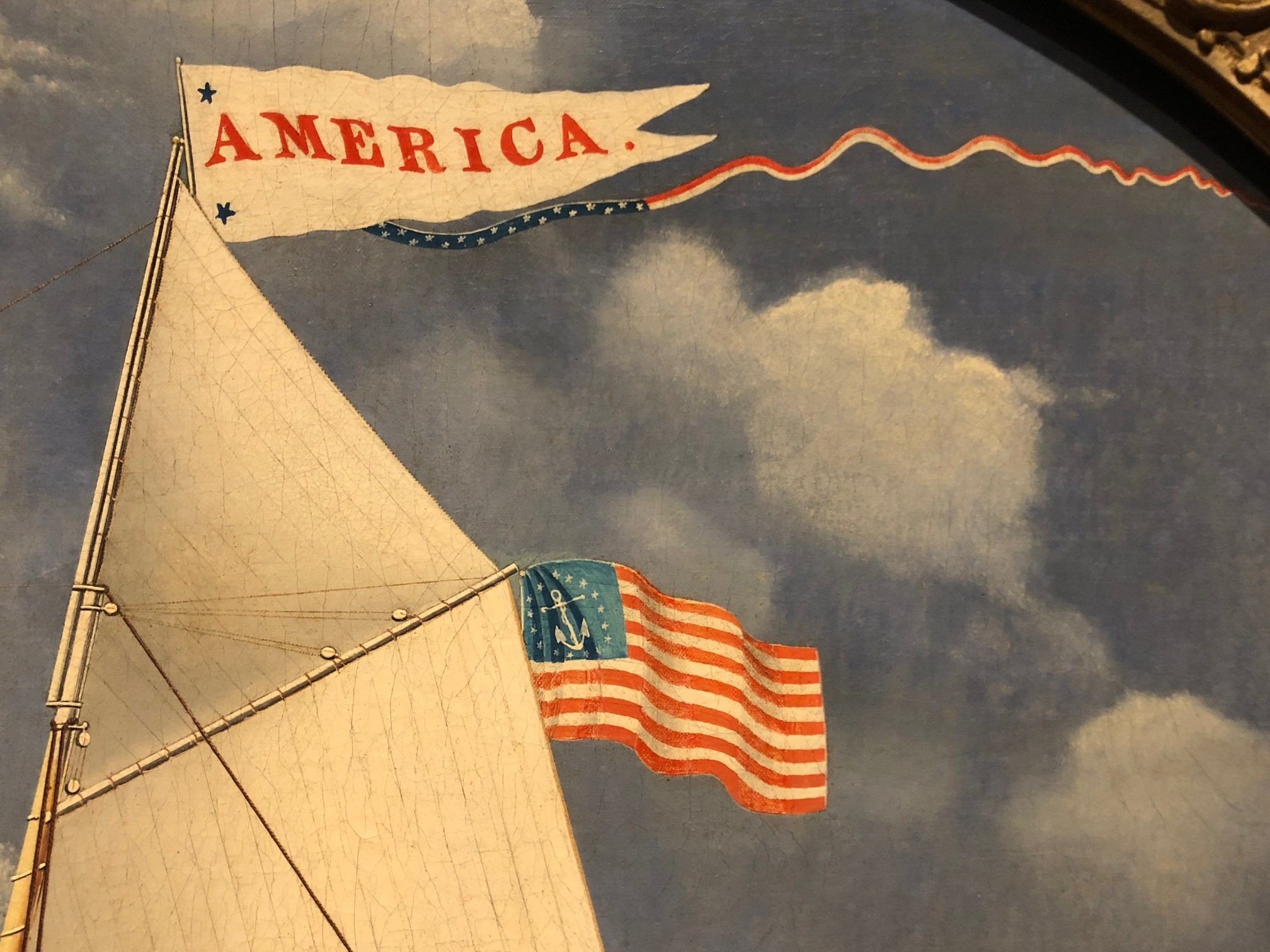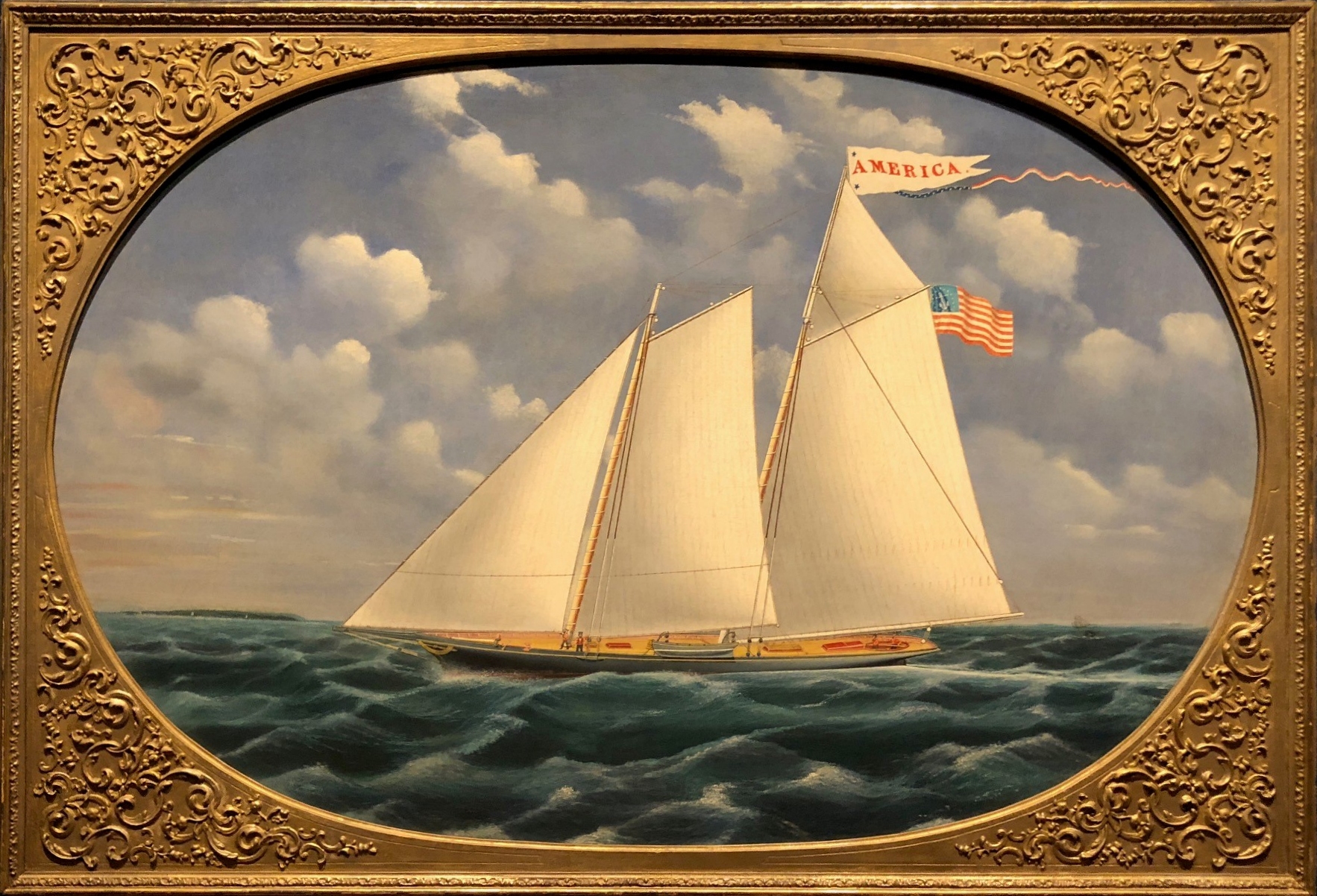|
 Beginning
in the early 19th century, the Navy adopted the use of
commissioning pennants as part of the complement of
flags and ensigns aboard their ships. The commissioning
pennant was first hoisted when the ship was officially
commissioned and it remained flying unless a flag
officer or civilian, such as admiral, is aboard, during
which time the commissioning pennant is replaced by
their own flag. The practice of commissioning pennants
continues today, and the style of the pennants has
varied over the years. This particular pattern, with
staggered stars, is the earliest style and form that I
have encountered. I know of two other pre-Civil War
pennants, one with 20 (1818) stars and another with 26
stars (1836-1845), which are both original to the period
and are also in this style, where stars of the flag are
staggered, rather than appearing in a row. The
construction of this pennant, along with the quality and
type of wool bunting and cotton stars, is consistent
with flags made in the 1820-1845 period, and I am
confident that this flag dates to this timeframe. The
hoist, wool bunting and sewing thread is very similar to
the 13 Star Lafayette Flag (IAS-00367)
in the Rare Flags collection that dates to 1825 or
earlier. Flags and pennants from this very early
period are rare, and just a small handful
survive. The entire pennant is hand sewn and the stars
are single-appliqué construction with a high quality and
early style of stitching.
The construction and material used for the host, which
seems to be a linen fabric with whip-stitched grommets,
is also similar to other pre-Civil War flags in the
collection. The pennant is
somewhat long, at 40 feet in length, compared to the
others of the type, is reasonably small, with some pennants
from this period being over 100 feet long. This
example is in exceptional condition for such an early age.
A survey of early sailing
ship paintings from the 1820's and 1830's shows many
ships of this period flying pennants with the staggered
star arrangement. Later in the 19th century, linear
stars became prevalent, but the staggered pattern seemed
to be a prevalent design for these pennants in the first
half of the 19th century. Beginning
in the early 19th century, the Navy adopted the use of
commissioning pennants as part of the complement of
flags and ensigns aboard their ships. The commissioning
pennant was first hoisted when the ship was officially
commissioned and it remained flying unless a flag
officer or civilian, such as admiral, is aboard, during
which time the commissioning pennant is replaced by
their own flag. The practice of commissioning pennants
continues today, and the style of the pennants has
varied over the years. This particular pattern, with
staggered stars, is the earliest style and form that I
have encountered. I know of two other pre-Civil War
pennants, one with 20 (1818) stars and another with 26
stars (1836-1845), which are both original to the period
and are also in this style, where stars of the flag are
staggered, rather than appearing in a row. The
construction of this pennant, along with the quality and
type of wool bunting and cotton stars, is consistent
with flags made in the 1820-1845 period, and I am
confident that this flag dates to this timeframe. The
hoist, wool bunting and sewing thread is very similar to
the 13 Star Lafayette Flag (IAS-00367)
in the Rare Flags collection that dates to 1825 or
earlier. Flags and pennants from this very early
period are rare, and just a small handful
survive. The entire pennant is hand sewn and the stars
are single-appliqué construction with a high quality and
early style of stitching.
The construction and material used for the host, which
seems to be a linen fabric with whip-stitched grommets,
is also similar to other pre-Civil War flags in the
collection. The pennant is
somewhat long, at 40 feet in length, compared to the
others of the type, is reasonably small, with some pennants
from this period being over 100 feet long. This
example is in exceptional condition for such an early age.
A survey of early sailing
ship paintings from the 1820's and 1830's shows many
ships of this period flying pennants with the staggered
star arrangement. Later in the 19th century, linear
stars became prevalent, but the staggered pattern seemed
to be a prevalent design for these pennants in the first
half of the 19th century.
Below are images of the
Schooner Yacht America, New York, New York, 1851,
painted by James Bard, which provide a wonderful image
of how a pennant such as this would have been seen and
flown. The painting is in the collection of the Abbey
Aldrich Rockefeller Folk Art Museum in Williamsburg,
Virginia. note the style and presentation of the
yachting ensign, to include the quirky elliptical star
pattern, which is comparable to
IAS-00428,
and the style of the pennant with its staggered stars.


|

